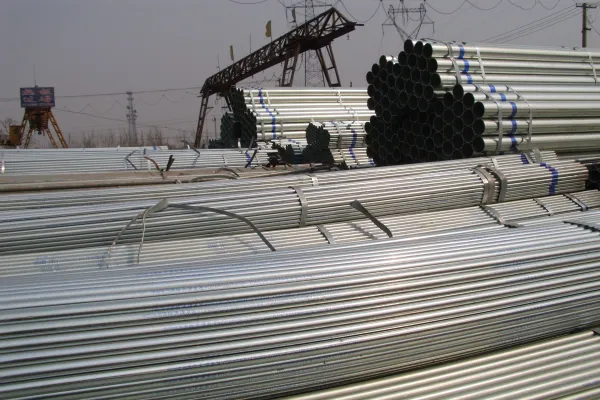Galvanization is the process of applying a zinc coating to steel or iron to prevent rust and corrosion. This protective layer serves as a barrier against environmental factors such as moisture and chemicals. There are different types of galvanization, with Hot-Dipped Galvanized (HDG) Steel and Electro-Galvanized (EG) Steel being the most common.When selecting galvanized steel for a project, understanding the differences between Hot-Dipped Galvanized (HDG) Steel and Galvanized Steel (GI) is essential. Both processes provide corrosion protection, but their manufacturing methods, durability, and applications vary significantly. This article explores their key differences to help buyers make informed decisions.
1.Definition of Hot-Dip Galvanizing
For over 150 years, the hot-dip galvanizing process has been the specified process for combating corrosion of steel in the harshest environments in a variety of markets. However, as new markets emerge, new technologies and innovative chemistries continue to improve the specifications and uses of hot-dip galvanized steel. Once viewed as a means of corrosion protection, hot-dip galvanizing is now specified for a range of reasons, including lower initial cost, durability, long service life, availability, versatility, sustainability, and even aesthetics.
Manufacturing Process
HDG steel is produced by submerging steel into a bath of molten zinc at approximately 450°C (842°F). This process creates a thick, durable zinc coating that metallurgically bonds with the steel, forming multiple protective layers.
Key Characteristics
Thicker Coating: HDG steel typically has a zinc layer of 50-100 microns, providing long-term corrosion resistance.
Strong Bonding: The zinc coating forms an intermetallic layer that enhances adhesion and durability.
High Corrosion Resistance: Suitable for extreme environments, including marine, industrial, and outdoor applications.
2. What Is Galvanized (GI) Steel?
Galvanized iron (GI) is iron that has been coated with a layer of zinc to help the metal resist corrosion. Steel can also be galvanized. When metal will be used in an environment where corrosion is likely, it is often galvanized so that it can withstand corrosive conditions. However, even with galvanizing, corrosion will eventually begin to occur, especially in acidic conditions.Galvanized steel is one of the most popular types of steel because it offers longer durability, with the strength and formability of steel and the corrosion protection of the zinc-iron coating. The zinc acts as a barrier to corrosive elements to protect the base metal, while the sacrificial nature of the coating makes the steel product durable and high quality.
Manufacturing Process
GI steel, also known as electro-galvanized steel, is produced using an electroplating process. This method applies a thin layer of zinc onto the steel surface through an electrical current.
Key Characteristics
Thinner Coating: The zinc layer is usually 10-30 microns, making it less resistant to harsh environments compared to HDG steel.
Smoother Finish: GI steel has a uniform, polished appearance, making it ideal for aesthetic applications.
Moderate Corrosion Resistance: Best suited for indoor or mild outdoor environments.
3. HDG vs. GI: Key Differences
|
|
|
|
|
Feature
|
HDG Steel
|
GI Steel
|
|
Coating Thickness
|
50-100 microns
|
10-30 microns
|
|
Manufacturing Method
|
Hot-dipping in molten zinc
|
Electroplating with zinc
|
|
Corrosion Resistance
|
High (suitable for harsh environments)
|
Moderate (best for mild environments)
|
|
Durability
|
Strong intermetallic bonding
|
Less durable coating
|
|
Appearance
|
Rough, matte finish
|
Smooth, bright finish
|
|
Best Use Cases
|
Outdoor structures, marine environments
|
Indoor applications, automotive parts
|
HDG and GI diffrence:
1, Different corrosion resistance, hot-dip galvanizing cold galvanizing several times.
2, On the way different jobs: HDG is 450-480 degrees in the molten liquid zinc plated zinc plating is cold at room temperature by plating zinc plating or other methods.
3, Zinc coating thickness, is far greater than the thickness of the hot-dip galvanizing cold galvanizing.
4, The surface smoothness is different than the hot-dip galvanizing cold galvanizing look nice and smooth.
5, Different prices, the price is higher than the hot-dip galvanized cold galvanizing.
6, Cold galvanizing can only plated one side, the whole quest galvanized plating.
7, Different adhesion, cold galvanizing adhesion better than galvanized.
8, Different charges, according to the thickness of the hot-dip galvanized material charges, according to the majority of cold-plated square meter charges.
4.Choosing the Right Steel: HDG or GI?
When deciding between HDG and GI steel, consider the following factors:
Environmental Exposure:
If the steel will be exposed to harsh environmental conditions such as high moisture, salt, or industrial pollutants, HDG steel is the better option due to its thicker coating and superior corrosion resistance.
Application Requirements:
For applications where appearance and smoothness are important—such as in automotive parts, appliances, and some indoor structural applications—GI steel's smooth finish makes it a more attractive choice.
Budget Considerations:
If budget constraints are a primary factor, GI steel is a more affordable option. It provides good corrosion protection for less demanding applications, making it an excellent choice for projects with lower environmental exposure.
5. Conclusion
Both Hot-Dipped Galvanized (HDG) Steel and
Galvanized (GI) Steel offer corrosion protection, but they differ significantly in terms of durability, application, and cost. HDG steel is ideal for harsh environments and structural applications, while GI steel is best suited for indoor and aesthetic uses. Understanding these differences ensures that the right material is selected for specific project needs, optimizing performance and longevity.
Welded steel pipe and
seamless steel pipes are galvanized in many applications where corrosion protection is required.When choosing between HDG and GI steel, consider environmental exposure, application requirements, and budget to make the most cost-effective and durable selection.






 English
English Español
Español بالعربية
بالعربية











 Phone :
Phone :  Whatsapp :
Whatsapp :  Email :
Email : 


